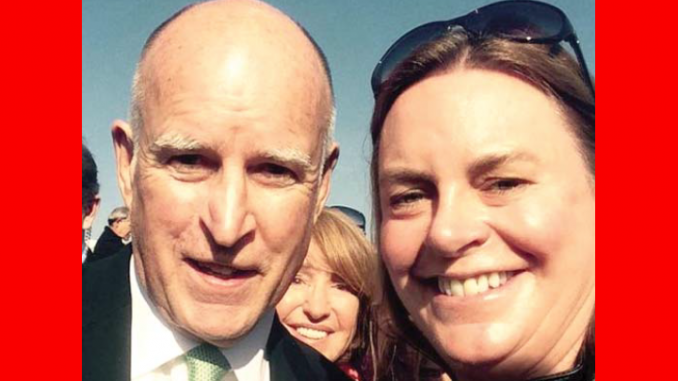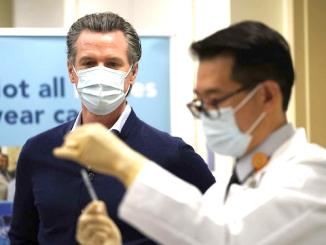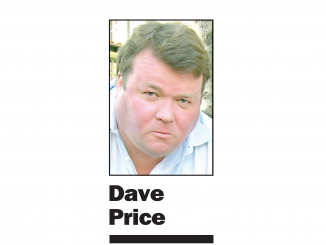
By the Daily Post staff
Here’s a look at the history of high-speed rail in California and the Peninsula.
1996 — The state Legislature establishes the California High-Speed Rail Authority to plan for a rail line spanning the state.
Oct. 6, 2008 — Palo Alto City Council unanimously approves a resolution supporting the high-speed rail measure on the November 2008 ballot. Council members were enthusiastic about the project. Palo Alto resident Herb Borock warned the council that the additional tracks for high-speed rail would probably result in the elimination of homes near the railroad. Nobody on council followed up on his point.
November 2008 — California voters approve $9.95 billion in bonds to build an 800-mile high-speed rail system that would connect San Francisco and Los Angeles in two and a half hours. The vote was 52.6% to 47.4%.
February 2009 — Palo Altans discover the consequences of the approval of high-speed rail. A Feb. 9, 2009, story in the Post began, “Dozens of residents who crammed into a Palo Alto house yesterday gasped and shuddered when they heard that trains would blast through their neighborhood once every two minutes — at speeds up to 170 mph — when the state high-speed rail project is completed.” The story says that many in the crowd voted for the high-speed rail measure but didn’t read the details in the voter guide.
May 2009 — Lawyers for the rail authority say that Palo Alto officials knew the bullet trains would run through town as far back as 2007, and said they were fine with it.
July 2010 — The Peninsula Cities Consortium — formed by Palo Alto, Menlo Park, Atherton, Belmont and Burlingame to oppose high-speed rail — issue a public statement claiming the rail authority has an “enormous credibility problem” and telling the agency to “build right or not at all.”
September 2010 — Atherton, Menlo Park and Palo Alto councils all vote to sue the California High-Speed Rail Authority
November 2010 — Federal regulators decide that $4.3 billion in Obama administration stimulus funding should be spent on the segment between Bakersfield and Merced, and not on the San Francisco-to-Central Valley leg of the project as the rail authority had hoped. Rail authority board member Rod Diridon said he felt the federal government’s decision was “heartbreaking,” and he blamed opposition on the Peninsula.
April 2011 — Then state senator (now Santa Clara County Supervisor) Joe Simitian, then-Assemblyman Rich Gordon and Congresswoman Anna Eshoo propose the “blended plan” that called for electrified Caltrains to share their tracks with high-speed rail, eliminating the threat of a four-track rail corridor from San Francisco to San Jose. The blended plan, which was later approved by Gov. Brown, quieted the opposition to high-speed rail.
July 6, 2012 — Legislature votes to fund the first segment of high-speed rail in the Central Valley. Simitian votes no, while state Sen. Jerry Hill and then-Assemblyman Rich Gordon vote yes. Simitian gives a speech on the floor of the Senate that ended with, “This is the wrong plan in the wrong place at the wrong time.”
March 2013 — A poll by the nonpartisan Public Policy Institute finds that 54% of likely voters oppose high-speed rail.
June 2014 — Gov. Brown and the Legislature agree to spend 25% of the state’s cap-and-trade funds on high-speed rail. The cap-and-trade tax raised gas prices by 63 cents a gallon.
Jan. 6, 2015 — Groundbreaking for the first segment of high-speed rail takes place in Fresno. Then-Menlo Park Councilwoman Kirsten Keith attends the ceremony and poses for a selfie with Gov. Brown and sends it out on Twitter. Palo Alto Councilwoman Liz Kniss and former Councilwoman Nancy Shepherd were on hand, too.
May 22, 2017 — The Trump administration announces that it will provide $647 million to electrify Caltrain. The move will also allow the all-electric high-speed rail to use the Caltrain tracks.
June 2017 — Despite promises that high-speed rail will use the “blended plan” of sharing existing tracks with Caltrain, the rail authority says it is considering adding two tracks for six miles between San Mateo and Redwood City, leaving that area with four sets of tracks.
March 2018 — The rail authority says the cost of the project has jumped from $64 billion to $77 billion and the completion date is being pushed back four years to 2033.
May 2018 — A Los Angeles Times poll finds support for continuing to build high-speed rail has dropped to 31%.
Nov. 15, 2018 — State auditors say that flawed decision-making and poor contract management contributed to billions in cost overruns and years of delays in the high-speed rail project.
December 2018 — Caltrain reveals it is studying the idea of adding two more sets of tracks from Palo Alto’s California Avenue station to Mountain View, bringing the number of tracks in the area to four. The two additional tracks would be “passing tracks,” where trains would idle or travel more slowly while the pair of regular parallel tracks would be used by express trains or high-speed rail.




The Kirsten Keith photo is the perfect representation of how this project was a scam from the start. She obviously was in favor of the project when she’s around her political pals, like Jerry Brown, but when she is around people like us, who have to live with consequences of the train, she’s against it. A typical politician who wants it both ways. Glad she was voted out of office!